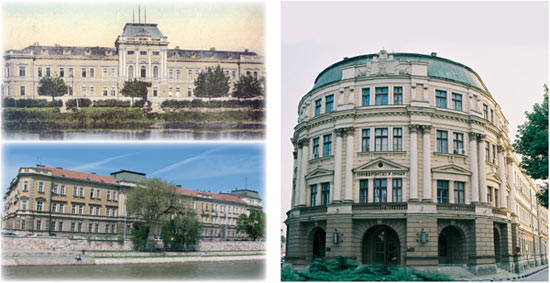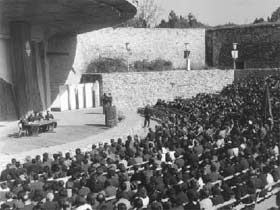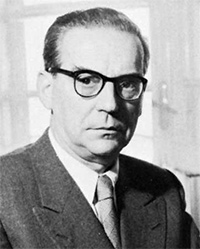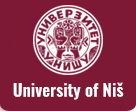Faculties
Gender Equality
Gender equality at the University of Niš
The University clearly expresses its commitment to the principles of gender equality through its commitments within the Mission and Vision of the University in the part related to gender equality.
MISSION OF THE UNIVERSITY:
- Achieving the strategic goal of inclusion in the European Educational and Research Area in accordance with the highest standards of quality of education, scientific research and professional work.
- Creating and maintaining an environment of equal opportunities and a culture of equality and inclusiveness during studies and work.
- Commitment to gender equality in order to create a gender-responsible organizational environment for its students, academic, administrative and support staff through the integration of gender into the functions of the University, in order to achieve gender equality and women empowerment.
VISION OF THE UNIVERSITY:
- Socially responsible university that applies academic principles and values in the realization of its basic functions of education and research.
- University with a pronounced social and non-discriminatory dimension of attitudes towards students and academic staff.
- Modern and recognizable gender-sensitive university where essential gender equality is achieved.
Decision on the adoption of the Gender Equality Plan to 2025
University Centers
CENTER FOR CAREER DEVELOPMENT
- gathers and puts information on web site on the possibilities of studying at the University.
- organizes meetings with potential employers and students.
- makes contacts with the competent employment services.
CENTER FOR MULTIDISCIPLINARY STUDIES
-organizes and implements the specialist, master and doctoral studies as well as the special modes of studies for knowledge innovation in the multidisciplinary scientific fields.
- participates in the realization of joint projects with the partners of the University on the national and international level.
CENTER FOR INTERNATIONAL RELATIONS
- prepares the necessary decisions and the accompanying documentation needed for the University participation in international projects and other forms of international collaboration.
- establishes contacts with universities and other institutions on the international level.
CENTER FOR TECHNOLOGY TRANSFER
- promotes various forms of knowledge transfer.
-provides various forms of support for the placement of new technologies and innovations in the market.
CENTER FOR LIFELONG LEARNING
- develops, defines and implements training courses and modules in the field of lifelong learning.
- coordinates and cooperates with foreign universities in the international projects related to the field of lifelong learning.
INTERFACE CENTER
- develops methodologies and tools for the knowledge transfer enhancement.
- develops measures for the improvement of higher education in accordance with current demands of the labor market and society.
CENTER FOR COGNITIVE SCIENCES
- improves the interdisciplinary collaboration in the field of cognitive sciences.
- initiates international relations in the field of cognitive sciences.
CENTER FOR BYZANTINE-SLAVIC STUDIES
- organizes research in the field of Byzantine and Slavic studies.
- collaborates with other centers and institutions for Byzantine, Patristic, Slavic, Byzantine-Slavic, medieval, ecclesiastical, Orthodox, Christian, and religious studies in the region and abroad.
STUDENT SUPPORT CENTER
- provides support to students from unrepresented groups.
- provides counseling and gives psycho-social support
Contact: Nevena Mitić
тел: (+381)18 257-526, (+381)18 529-363, (+381) 69 2550311
Science and Research
Educational-research and educational-artistic activities
In conformity with the Law on Higher Education, and the Statute adopted by the University of Niš, the types and degrees of studies were defined at the University of Niš and the European Credit Transfer (ECTS) was introduced. Higher Education activity is carried out though academic and professional studies.
First degree studies at the University of Niš are organized as basic academic studies and basic professional studies. Second degree studies at the University of Niš are organized as master academic studies, integrated academic and specialist academic studies. University of Niš offers third degree studies – Doctoral academic studies. In line with the higher education reform that was initiated by the Law on Higher Education, the University of Niš and its faculties have conducted intensive
activities on the adoption of new study programs in order to increase the attractiveness of the contents offered to students, and thereby increase the interest of young people to study at the University of Niš.
University of Niš was accredited in February 2009 for the first time, in the third cycle of accreditation of higher education institutions in Serbia, together with the Universities of Belgrade and Novi Sad. Soon after, in August 2010, the first master academic study program of the University of Niš was accredited under the title “Multimedia Technologies in Technical and Technological Sciences in the field of Electrical & Computer Engineering” for the enrollment of 32 students within the premises of the University main building.
In conformity with the Law on Higher Education and by the Decision of the Commission for Accreditation and Quality Assurance of the Republic of Serbia all the faculties of the University of Niš have been accredited.
Research work
Research work is performed at all faculties of the University of Niš, in the areas of basic, applied and development scientific research. Research supports development of science and creativity, improves higher education activities through the improvement of the teaching process, advancement of young scientists, inclusion of students into the academic work, as well as by providing the resources for work and development of the university as a whole. Research work in the previous period has been carried out though participation of the teaching staff in the realization of national and international research projects, publishing papers in academic journals and attending academic seminars in the country and abroad.
Activities financed by the Serbian Ministry of Education, Science and Technological Development represent the basic form of research work at the faculties, and a considerable funding resource. Great number of the faculty teaching staff has been participating in projects of this kind.
University Building - Banovina
The University main offices are situated in one of the most representative city structures, an edifi ce built in the late 19th century, which was formally recog- nized as a cultural treasure of major signifi cance in 1979.
The building was constructed way back in 1887, in the city center, at the right bank of the river Nisava, for the needs of the district authorities of that time. The monumental building bears characteristics of the neo Renaissance style, designed by an unknown Viennese architect. During its long history, it was fi rst housing the District Court, the District Government and the Military Headquarters and then, in the period from July 26th 1914 to October 16th 1915, when Niš was the Serbian war capital, the building was the seat of the Serbian Govern- ment and its Ministry of the Interior. It was to this edifi ce that the formal declara- tion of war was directed from Austria-Hungary on July 28th 1914.

In 1930, the building became the administrative seat of the Morava County, after the World War II it housed the District Administration, while in 1967 it was assigned to the permanent use to the University of Nis.
In 2008, marking the 120th Anniversary of its building, the University of Niš has, for the fi rst time, completed the necessary adaptation and construction works in order to enable access to persons with disabilities to all University facilities.
History

Everything began on June 15, 1965, when the history of the University of Niš started.
The youngest University in the country was founded on that date - third Serbian and seventh Yugoslavian. Since then, the city of Niš has been writing a new page of its history as a University city – exactly five decades of academic development, half a century of university mission passed since then…
More precisely, it all started five years earlier, in 1960. During that year, the first faculties were founded in Niš, the three faculties under the academic patronage of the University of Belgrade, by which the first seeds of higher education in this part of Serbia were sown. The soil in the ancient city on the river of Nišava, then the modern economic and cultural seat and also an important Yugoslav center, was fertile, the seeds received easily, developed and left deep roots. In the years of strong industrial development of the country and the overall economic and social momentum, a young, newly established institution added to its stormy, ambitious reality a new zest, miraculous enthusiasm and academic dream of young generations…
The University of Niš foundation, undoubtedly, represents one of the most significant moments in the contemporary history of the city. By developing itself, the University was at the same time making a new image of the city of Niš, this part of Serbia, and the whole Yugoslavia. In extremely turbulent decades of development, dynamic changes in social relations, and even more in the sphere of technical and technological processes, the higher education staff was the necessity, the outcome and the significant factor of the total changes in the country.
The University, in the years after the foundation, made big contribution to improving the former socialist self-governing community, and it went through different stages of development in the forthcoming decades. It followed the fate of the society from which it emerged, led a number of changes and carried out numerous reforms, instigated and defined development processes through educational, scientific, artistic, professional and human contribution. Today, the highest academic institution in Niš is firmly rooted, stable and mature, with a half-century tradition, and represents the temple of science and art, knowledge transfer and scientific thought. Its driving force is striving towards expanding horizons, progress and development of the overall potential for the benefit of the whole society and individuals in it.
By its elite role, which has by the nature of the academic structure already been assigned to it, the University of Niš represents the most precious connection with the world – with the global science, unique educational space of Europe or the global art trends and developments. The University represents a connection with young generations, academics around the world, who are the future and the new energy of each society. Students guided by youthful ambitions, visions and ideals and professors who possess significant knowledge, experience and who work patiently, give the University a strong driving force and creative power.
The words, with which Prof. Dr. Branimir Janković, the first rector of the University of Niš, ended his first address at the opening ceremony of this higher education institution, were confirmed throughout the latter decades, i.e. throughout a half a century of its academic activities: “University of Niš is a huge historical event for all of us here, for our region and for our Republic of Serbia. It will broadly develop its technical, scientific, social, educational and cultural activities and contribute to faster revival of this region, the Socialist Republic of Serbia and our Yugoslav socialist community.”
University development
15.6.1965 - Foundation of the University of Nis.
1967 - Foundation of the University Librabry "Nikola Tesla"
1968 - The Department of Electronics grew into the Faculty of Electronic Engineering;
1970 - The two departments of the Faculty of Law and Economics became independent faculties; Publication of the first three books of the University proffesors.
1971 - The Departments of Mechanical and Civil Engineering became separate, independent faculties. In the same year, the Faculty of Philosophy was established with its seven departments: Mathematics, Physics, Chemistry, Sociology, Psychology, English and Physical Education;
1972 - The Faculty of Occupational Safety grew out of the Faculty of Civil Engineering;
1977 - Launching of the first University scientific journal "Marxist Themes", which is today published under the title "Themes"
1979 - The Faculty of Technology was founded;
1984 - Establishment of the scientific journal "Facta Universitatis" that has been published ever since (14 independent series in various scientific fields)
1986 - Foundation of JUNIS (The University of Nis Information System)
1987 - The Faculty of Philosophy grew to include the Department of Serbian Language and Literature;
1991 - Formation of the Research Centre of the Serbian Academy of Arts and Sciences (SASA) and the University of Nis
1993 - The Teacher-Training Faculty in Vranje enrolled its first generation of students;
1995 - The Faculty of Civil Engineering expended its academic mission to include a new department - of Architecture, which was consequently added to its name;
1998 - The academic structure of the Faculty of Philosophy widened to include the Department of History. In the same year, the Faculty of Fine Art and the Faculty of Applied Art and Design of the Belgrade University of Art opened their academic divisions in Niš;
1999 - The Faculty of Science and Mathematics and the Faculty of Physical Culture grew out of the Faculty of Philosophy;
2000 - The University family became richer for six new departments: Geography and Biology with Ecology (adjoined to the Faculty of Science and Mathematics), Philosophy, Pedagogy, Slavic & Balkan Studies and Fine Arts (attached to the Faculty of Philosophy).
2002 - The Faculty of Fine Arts was established with three study options - for visual arts, applied arts and music - previously functioning within the Department of Fine Arts of the Faculty of Philosophy.
2004 - New department was formed at the Faculty of Philosophy: Department for Journalism.
2005 - European Credit Transfer System (ECST) was introduced
2007 - Forming the first convocation of the Student Parliament
2008 - The Department of Serbian Language and Literature of the Faculty of Philosophy was divided into the Department of Serbian Language and Department of Serbian and Comparative Literature.
2009 - First Accreditation of the University
2010 - The "Alumni" of the University of Nis was formed as a separate organizational unit
2011 - Multidisciplinary Studies were organized at the University of Nis
2014 - The European Commission awarder the University of Nis with the logo Human Resources Excellence in Research presented at a ceremony in Brussels
By its constant development, the University of Niš has been confirming visionary words of our Nobel Prize-winner Ivo Andrić, echoing from the Opening Ceremony held on October 15, 1965:
" ... As a literary man I would like to say a few words about the importance of literature, and generally, of art, in the life of any nation and individual, including your own. I wish you … not to labor under an old Philistine delusion that the so-called practical man should be bent on "subsistence", that is on things that are considered, allegedly, the only real, turning its back on art and fine artistry as luxury or waste of time, as something accessory, superfluous and surreal.
... As a literary man I would like to say a few words about the importance of literature, and generally, of art, in the life of any nation and individual, including your own. I wish you … not to labor under an old Philistine delusion that the so-called practical man should be bent on "subsistence", that is on things that are considered, allegedly, the only real, turning its back on art and fine artistry as luxury or waste of time, as something accessory, superfluous and surreal.
No one should ever believe that. Art is, quite the contrary, the very quintessence of all forms of our real life, helping us to comprehend life more easily and live it more effectively, to make it at least more bearable to ourselves and to others. It is an indispensable element in the growth of the human spirit, in the development of the higher forms of social life, and it would be unwise and dangerous to deprive ourselves of its help. This applies to any place and any time. And the man belonging to our present society needs it more than it was the case with the previous generations, as the goals of the new life urge him to be a more harmonious and more universal personality, rather than a biased and narrow-minded professional. And it is exactly this harmony between the reason and the imagination, this balance between the goals and the responsibility of practical life on one hand and the width and serenity of the spirit on the other that should give our man a distinctive feature and ability to fully develop all his creative powers..."


